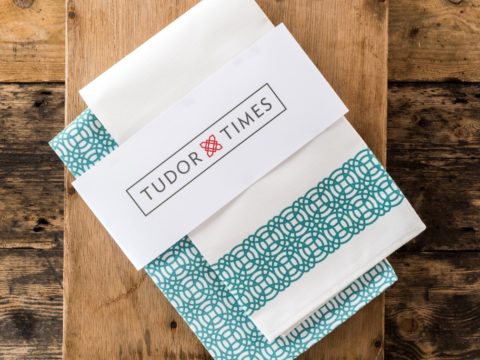Who's Who in Wolf Hall
Biographies of people whose lives entwined with Cromwell
Chapter 4 : Cromwell - Frith
Cromwell, Thomas c. 1485 - 1540 1st Earl of Essex - Son of a small trader in Putney, details of Cromwell's early life remain obscure. He travelled to Europe, fought as a mercenary and worked for an Italian merchant before returning to England and taking up the law, specialising in conveyancing. He found a place in the household of Cardinal Thomas Wolsey, being appointed to Wolsey's council in 1519. He served Wolsey faithfully, then transferred to service of King Henry VIII, becoming a Privy Councillor in 1531.
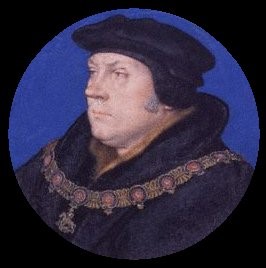
Cromwell was instrumental in finding a solution to the vexed problem of the annulment of the King's marriage to Katharine of Aragon. Cromwell steered the Acts of Supremacy and Succession through Parliament. Initially a supporter of the new Queen, Anne Boleyn, he was involved in her downfall, whether acting on his own initiative or directly under orders of the King is disputed. Cromwell, as Vicegerent (ie the King's deputy as Supreme Head of the Church in England) took a leading role in the Dissolution of the Monasteries, and the suppression of the Pilgrimage of Grace. His own religious beliefs appear to have been strongly favourable to the reform of the church and he was certainly a supporter of translation of the Bible into English.
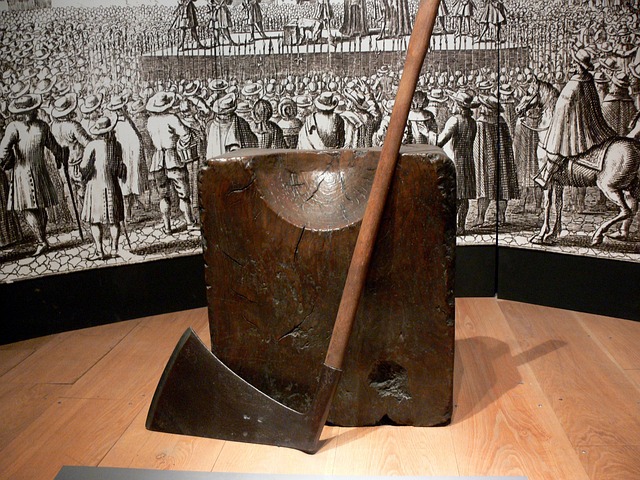
Cromwell lost the King's support in 1540 after promoting a disastrous marriage between Henry and Anne of Cleves. Despite being promoted to the Earldom of Essex in April 1540, his enemies (who were legion) took advantage of the King's unhappiness over the marriage to accuse him of treason. He was beheaded on Tower Hill in a botched job. Henry later appears to have regretted the loss of his chief minister.
Biographies
Thomas Cromwell: The untold story of Henry VIII's most faithful servant - Tracy Borman
Thomas Cromwell: Servant to Henry VIII - David Loades
The Rise and Fall of Thomas Cromwell, Henry VIII's most faithful servant - Peter Schofield
The rise of Thomas Cromwell: Power and politics in the reign of Henry VIII 1485 – 1534 - Michael Everett
Cromwell, Walter d. after 1514 Father of Thomas, he was a prosperous blacksmith and brewer, who built up his family's landholdings and took part in community affairs, acting as juryman and constable. He appears to have been a man of violent temper and somewhat questionable morality – being fined for fighting and for watering the beer on at least forty-eight occasions and eventually forfeited some of his lands for "falsely and fraudulently" altering documents.
Dinteville, Jean de c. 1504 – 1555 Ambassador for the King of France to Henry VIII in the 1530s. He is immortalised in Holbein's painting, "The Ambassadors". De Dinteville is on the left.
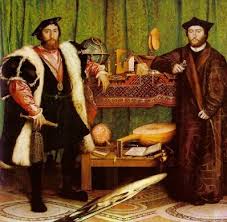
Edward, later Edward VI 1537 – 1553 Edward was the longed for male heir of Henry VIII and his third wife, Jane Seymour, his father's "jewel". Brought up carefully, and highly educated, many of his tutors were strongly reformist, and by the time Edward came to the throne at the age of nine he was already an ardent Protestant. Initially, his government was carried out by his uncle, Edward Seymour, Duke of Somerset, and a Council that Somerset consulted half-heartedly. After a coup, Somerset was replaced by John Dudley, Duke of Northumberland. Edward, desperate to secure a Protestant succession, attempted to bequeath the crown to his equally Protestant cousin, Jane Grey (coincidentally, Northumberland's daughter-in-law). Edward died, in great pain, aged sixteen.
Elizabeth, later Elizabeth I 1533 – 1603 Elizabeth was the daughter of Henry VIII and Anne Boleyn. Her gender was a terrible disappointment to her parents, who had expected a son, but as Elizabeth grew up she proved to be exceptionally clever and charismatic. After Anne's death, Elizabeth was in limbo, with little notice taken of her. Her Governess was constrained to write to Cromwell to ask for instructions on how to manage the household, and for new clothes.
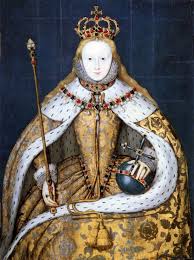
Never as close to her father as her siblings were, she nevertheless had a warm relationship with her last step-mother, Katherine Parr, who strongly influenced her, particularly in matters of religion. Elizabeth succeeded as Queen in 1558, and re-established Royal Supremacy over the English Church. It is possible that, initially, she would have pursued a more conservative religious line than the eventual Anglican settlement, but she was hampered by the refusal of most of Mary's bishops to accept the Royal Supremacy and so replaced them with more Protestant leaning clergy. Elizabeth's reign of 45 years, although it was not all plain sailing, is seen as golden era of exploration, relative (by sixteenth century standards) religious tolerance and the flowering of English literature.
Biographies
Elizabeth I – Christopher Haigh
Elizabeth: Apprenticeship – David Starkey
Elizabeth I – Judith M Richards
Fisher, John, Bishop of Rochester 1469 – 1535 Fisher studied at Cambridge and was ordained in 1491.He became Chaplain and Confessor to Lady Margaret Beaufort, Countess of Richmond and Derby, the very influential mother of Henry VII. Under his influence, Lady Margaret founded Colleges and Professorships at both Oxford and Cambridge. His personal piety, dedication to service and to fulfilling his mission as a priest were famous. According to Erasmus "He is the one man at this time who is incomparable for uprightness of life, for learning and for greatness of soul."On Henry VIII's accession, he continued as a Privy Councillor, but was never as favoured by him as by Henry VII. Fisher had preached against abuses in the Church and was keen for reform, but he was firmly opposed to Lutheranism, and any encroachment on Papal authority.
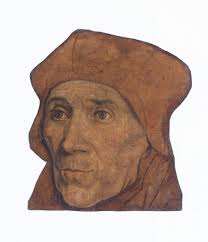
When Henry VIII's annulment suit began, Fisher was appointed as one of Queen Katharine's legal counsel, and he defended the validity of the marriage to the uttermost, being one of only a handful who stood against the King. He preached against the annulment in 1532, and in 1534 was imprisoned for involvement in the Elizabeth Barton affair. He refused to sign the Oath of Succession, conferring the Crown on the children of Anne Boleyn and was again imprisoned, without the benefit of a Priest. The Pope, hoping to alleviate his treatment, appointed him a Cardinal, an act which infuriated the King.
Fisher was tried for treason, the only witness being Sir Richard Rich. He was condemned and sentenced to be hanged, drawn and quartered. Fearing popular discontent at such a brutal end for a much respected man, Henry commuted the sentence to beheading.

Fitzwilliam, William, 1st Earl of Southampton c. 1490 – 1542 Fitzwilliam spent much of his youth at Henry VII's Court as a companion to the young Prince Henry. When the Prince succeeded as Henry VIII, Fitzwilliam received several Court positions. He was involved in naval warfare with France, and was later Admiral of the Fleet. He maintained his support of Henry VIII, accepting the annulment of the King's marriage and church reforms. However,he was known to be inimical to Anne Boleyn, and worked with Cromwell for her downfall. He was one of the jurors at her trial also took part in the interrogation of Henry Norris.
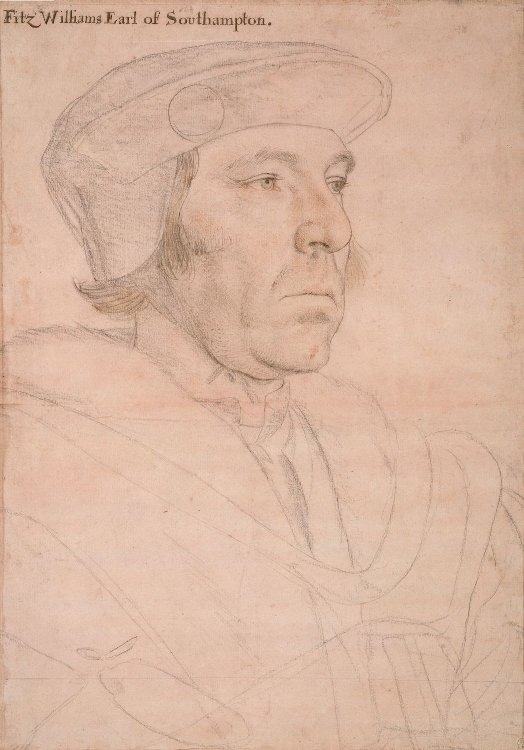
After Anne's fall, when Fitzwilliam was no longer of use to him, Cromwell had him expelled, along with Exeter, from the King's Council. Fitzwilliam had his revenge when Cromwell was arrested, personally removing the band of the Order of the Garter, from his knee. He profited, too, succeeding Cromwell as Lord Privy Seal. Fitzwilliam was instrumental in arranging the annulment of Henry VIII's marriage to Anne of Cleves. He was appointed to lead an expedition against Scotland in 1542, but died shortly thereafter.
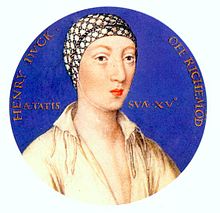
Fitzroy, Henry, Duke of Richmond 1519 – 1536 Henry VIII's son by Bessie Blount, he was given the dynastically significant titles of Duke of Richmond and Duke of Somerset in 1525. He was mooted as a possible heir to his father, in preference to his legitimate half-sister, Mary, but Henry never went down this route, preferring, instead to marry again in the hope of having more children. As Duke of Richmond, he nominally headed the Council of the North. Fitzroy was married, aged 14 to the daughter of the Duke of Norfolk, but was not permitted to consummate the union. Like his uncle Arthur, his half-brother Edward VI and his cousins, Henry and Charles Brandon, Fitzroy died in his mid-teens.
Frescobaldi, Francesco A Florentine merchant who employed Cromwell in the early 1500s. Frescobaldi, a banker, was a leading member of Florentine society and employed his great wealth in art, music and lavish hospitality. His business later exported wine to Henry VIII.
Frith, John 1503 – 1533 Frith studied at Cambridge under Stephen Gardiner before being appointed as a Canon at Wolsey's new Cardinal College, Oxford. During his period at Cambridge Frith had become interested in reformist ideas, and was arrested in Oxford for possessing banned books.

On release, Frith went to Antwerp and joined radical reformist groups there, writing strongly anti-Papal works, and criticising the doctrines of purgatory and transubstantiation. He was closely associated during this period with William Tyndale. Frith returned to England in 1532, and was arrested and imprisoned in the Tower of London. He refused to recant and was burned.
This article is available for Kindle, for purchase from Amazon US and Amazon UK.
